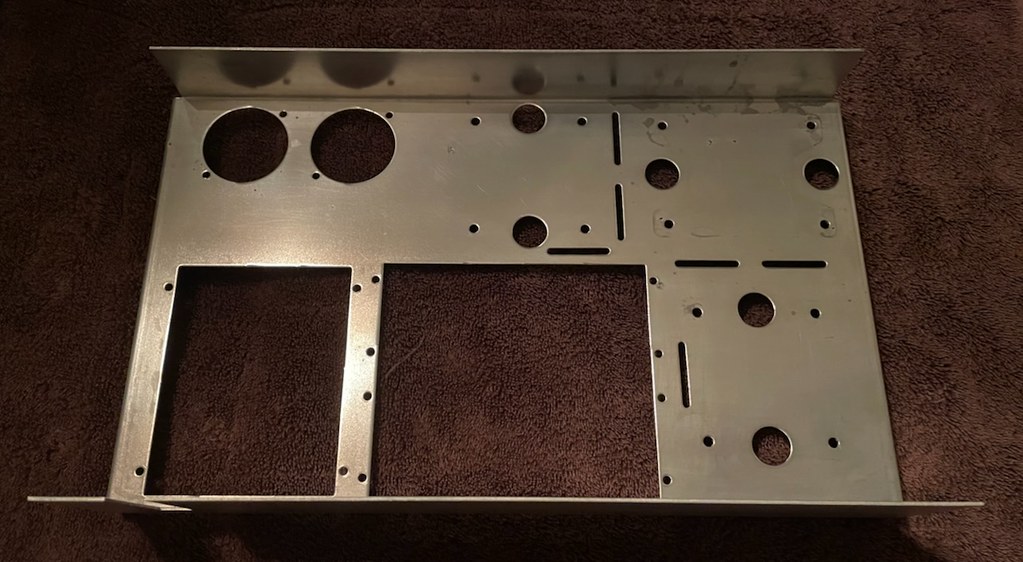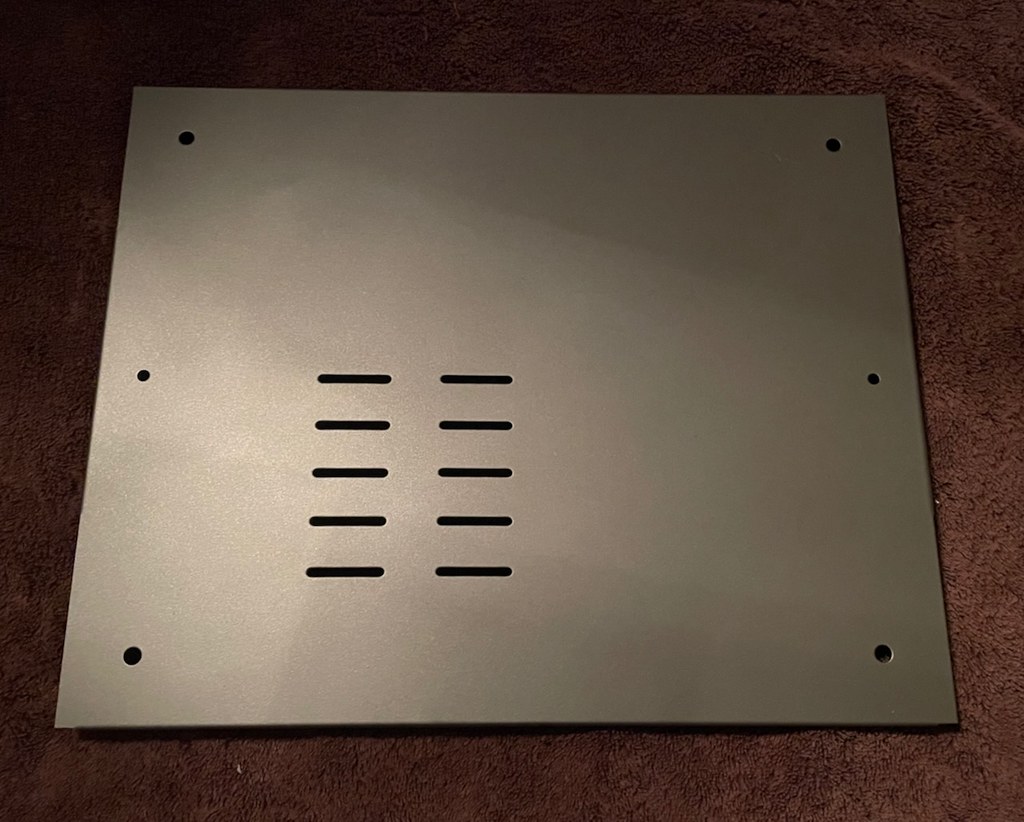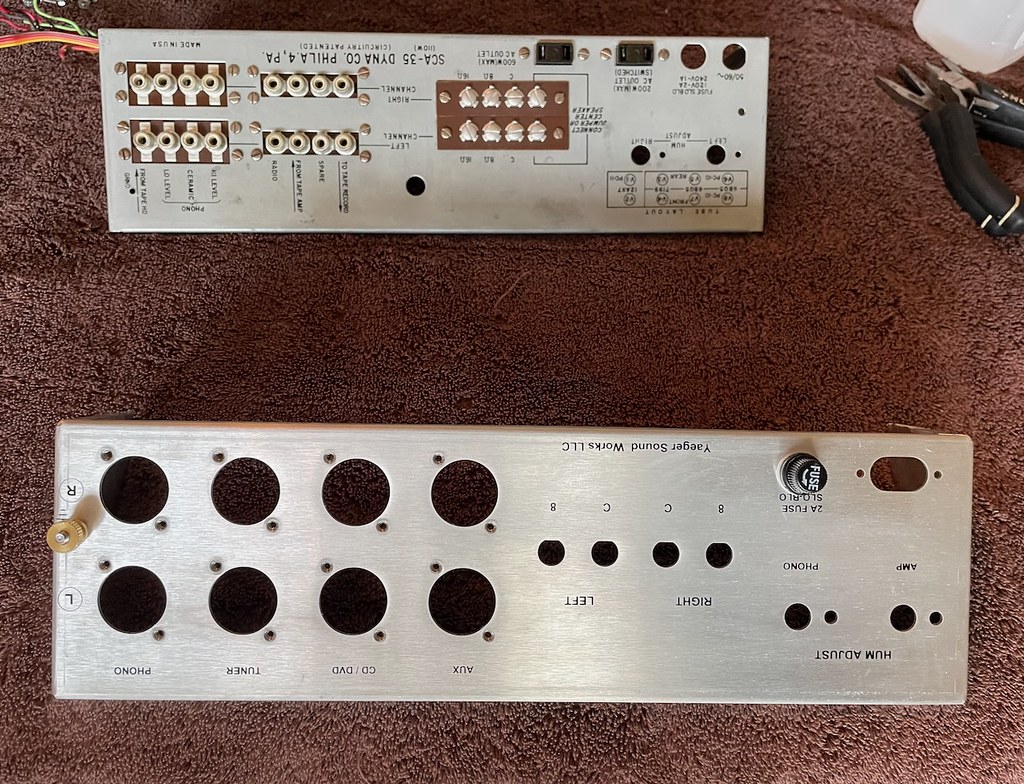I have a Dynaco SCA-35 that I bought in working order about three years ago. I enjoyed listening to it for a couple years or so until one day it suddenly developed a moderate hum (same level in both channels, did not change with volume). Swapping in a spare set of used tubes didn't make any perceptible difference, so I put it aside until I had time to investigate further... which turned out to be this weekend.

This is the patient.



I checked the power supply capacitors first and it turned out there were problems there. Both sections of the smaller 50 uF / 50 uF capacitor were no longer capacitors (open circuits). The capacitance measurements looked good for the larger capacitor, but the meter reading for some sections would drop out with slight changes in force/direction of applied meter probes. Seemed like a marginal internal connection. There was also what appeared to be a little bit of corrosion at and around the base of some terminals. Looks like it is time for new power supply capacitors.
I decided to resolve this with one of the available power supply board upgrades. I was thinking about working towards a full set of Dave Gillespie EFB boards over time - power supply board now and then upgrade the other boards when mine needed attention. Then I came across an auction listing for a full set of these boards already assembled after the seller's plans changed. Seemed like it was meant to be - so I bid on them and won the auction today.
So this has developed into a project. It won’t be a full restoration or anything close. I just plan take it a little further apart, clean it up internally, upgrade to the new Dave Gillespie boards, implement some other minor updates, and then put it back tougher. I’ll share updates here as it progresses.

This is the patient.



I checked the power supply capacitors first and it turned out there were problems there. Both sections of the smaller 50 uF / 50 uF capacitor were no longer capacitors (open circuits). The capacitance measurements looked good for the larger capacitor, but the meter reading for some sections would drop out with slight changes in force/direction of applied meter probes. Seemed like a marginal internal connection. There was also what appeared to be a little bit of corrosion at and around the base of some terminals. Looks like it is time for new power supply capacitors.
I decided to resolve this with one of the available power supply board upgrades. I was thinking about working towards a full set of Dave Gillespie EFB boards over time - power supply board now and then upgrade the other boards when mine needed attention. Then I came across an auction listing for a full set of these boards already assembled after the seller's plans changed. Seemed like it was meant to be - so I bid on them and won the auction today.
So this has developed into a project. It won’t be a full restoration or anything close. I just plan take it a little further apart, clean it up internally, upgrade to the new Dave Gillespie boards, implement some other minor updates, and then put it back tougher. I’ll share updates here as it progresses.
Last edited:















